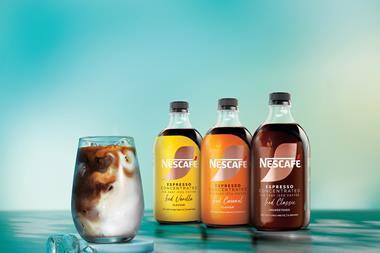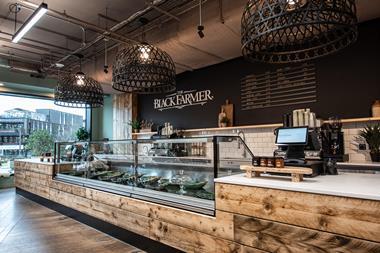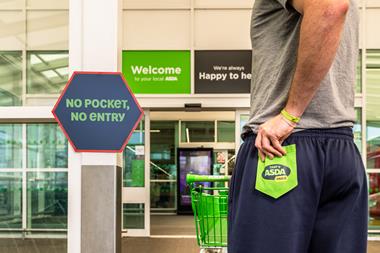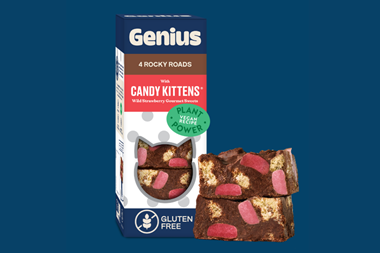n Tetley has joined a growing list of manufacturers who are bravely ditching much-loved product characters in favour of fresh campaigns. Simon Mowbray asks if it is the end of the road for our brand icons
Something rather sinister is happening in grocery ad land right now. A body count of discarded brand icons is rising to a level which wouldn't disgrace even the bloodiest of Agatha Christie whodunnits'. Only difference is, we know who's responsible, but not necessarily why. After all, why kill off something which, in some cases, has been breathing life into a brand for the best part of a century?
Unilever was the first to wield the axe in 2002, metaphorically speaking of course, claiming there would be no more monkeying around on TV for its PG Tips brand. And just last week, Tetley became the latest company to shock the nation by withdrawing another set of much-loved characters from our screens the cloth-capped Tea Folk.
Add the Bisto Kids, the Hovis Boy, Robertson's Golly and the Milky Bar Kid (in human form, at least) and there's a definite trend emerging the impending death of the brand icon.
It's certainly brave. All of them received wide coverage in the national newspapers when their demises were announced, likely to be due to Britain's ever-growing love affair with the TV. These characters are so well known that they have become not only a tool for shifting grocery staples off shop shelves but celebrities in their own right. The recall rates of adverts among the public is often greater than the TV programmes they are sandwiched between. They even get mentioned on programmes. Only the other week, actor Ricky Tomlinson's football chairman character pronounced: "You lot have more tea breaks than those bloody monkeys on TV!" as he delivered a characteristic rollicking during an episode of the BBC's female soccer drama Playing the Field.
So why get rid of them? Both Unilever and Tetley have spoken of "fresh approaches" needed to revitalise their brands and markets. Nestlé did the same when explaining the need to turn its Milky Bar Kid into a cartoon caricature. So, too, did Hovis when it left behind years of nostalgia to tell its bread boy to get on the bike he pushed and pedal it into the sunset. Only Bisto hinted at the real reason the public had simply had enough of its Bisto Kids.
Of course, it can be more complex. Robertson's, for example, had long been berated by campaigners who claimed its Golly was "racist". And PG Tips had been faced with charges of animal cruelty for years before its apes were finally dropped. Neither company would ever admit to such charges but the general trend remains the realisation that icons which were once relevant to their markets can no longer pull in the punters like they used to.
But what about the rest? A trawl through the annals of brand icons reveals that there are many more than we may at first realise. Not just that, but add together their combined ages and you're looking at hundreds of years of marketing history.
For example, all of us are acquainted with the inimitable Bertie Bassett. But how many of us realise that the Allsort-constructed character first showed his Coconut Chip face on packs in 1929? Likewise, Captain Birds Eye has been trawling the high seas for fish fingers for more than 30 years now and, in the late 1990s, turned from a lovable, white-bearded fisherman into an all-action hunk with a five o'clock shadow.
"That's one way of keeping hold of an ageing icon," says Peter Doyle, professor of marketing at Warwick University, "but I'm not convinced it works that well. Having said that, these icons can have blanket recognition across their markets and it can be a big decision to call time on something which has served you so well." However, Doyle believes some manufacturers have been even "too loyal" to their icons, sticking with a character long after his, or her, best days have passed.
"I think there is sometimes a blinkered view that consumers are so attached to the characters they will never be able to live without them. That's not necessarily true, but it can also be a mistake to get rid of them just because you think consumers are bored with them. There is evidence that consumers don't think at either end of these two extremes. In short, manufacturers sometimes think brand icons have greater influence than they really do."
One company, at least, would disagree with this last statement, although it is in the minority. Matthew Clark Brands knows all about trying to kill off a much-loved icon, having failed to sever its links with the Babycham deer despite its best efforts to do so. Axed in 1993, after 40 years, to make way for a blue bottle and squiggly yellow capital B', the company claims fans of the perry drink came out in force to say they preferred the antiquated green bottle and Disney-style deer. Four years later, both were back and the company has no intention of making the same mistake again.
"The new version did not do well," says spokesman Simon Russell. "We would now not dare get rid of the deer as it has really come back into fashion. Babycham is perceived to be cool in some London bars and the deer has even been used on a range of designer label clothing. Right now, we could not overstate the value of the icon to our brand."
But such turnarounds are rare and Doyle warns that the brand icon is vying for attention with own-label and licensed goods such as Harry Potter. "I would have thought we'll see more icons disappear before the end of the year," he says.
{{FEATURES }}
Close menu
- Home
- Retail & Wholesale
-
Products & Suppliers
- Back to parent navigation item
- Products & Suppliers
-
Product Categories:
- Back to parent navigation item
- Product Categories:
- Alcoholic drinks
- Bakery
- Cereals & breakfast
- Cheese
- Chicken & poultry
- Chocolate
- Confectionery
- Crisps, nuts & snacks
- Dairy
- Fish
- Fresh produce
- Frozen
- Household
- Meat
- Own Label
- Sauces & condiments
- Seasonal
- Soft drinks
- Vaping
- Vegan & plant-based
- World foods
- Suppliers
- People
- Reports & Data
-
Topics A-Z
- Back to parent navigation item
- Topics A-Z
-
Popular topics:
- Back to parent navigation item
- Popular topics:
- Cost of living crisis
- Crime
- Deposit Return Schemes
- Finance
- Government & Regulation
- Health
- Inflation
- Loyalty
- Marketing
- Mergers & Acquisitions
- New Product Development
- Sourcing
- Supply chain
- Sustainability & environment
- Technology
- Ultra Processed Foods
- Vaping
- A-Z all topics
- Content by type:
- Events
- Subscribe now
Sign in to comment on this article
Not logged in before? Register for FREE guest access today.
You will be able to:
- Read more stories
- Receive daily newsletters
- Comment on stories
Advert



















No comments yet